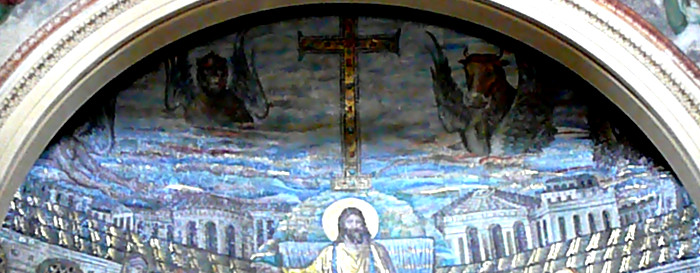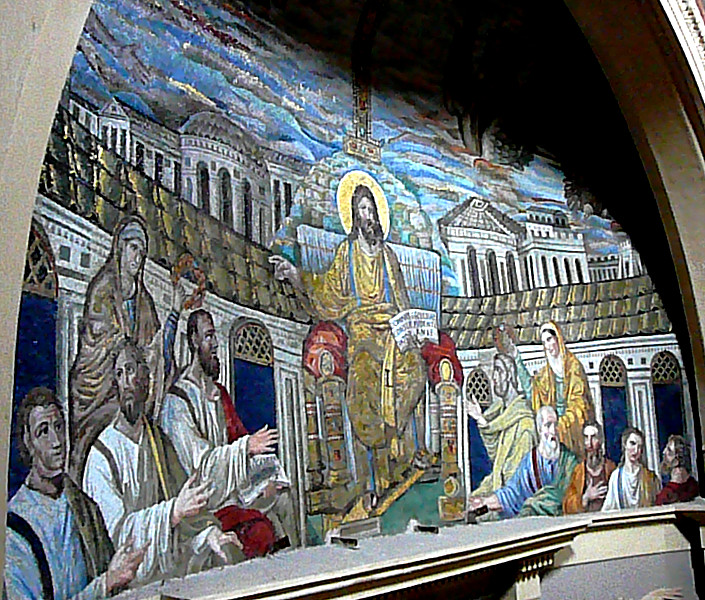The codex in Christ's left hand reads Dominus conservator ecclesiae Pudentianae, which can mean either "God is the preserver of Pudentiana's church" or "God is the preserver of the Pudentian [i.e. of St. Pudens] church."

The lower right corner of the mosaic is a restoration from 1588; otherwise, this is the oldest church mosaic in existence. It is also one of the earliest images in which Christ is represented as a human figure rather than a symbol. (Directly above this naturalistic image, he is represented symbolically by the Cross.) It also includes one of the oldest examples of the use of the angel, ox, lion, and eagle to represent the evangelists, a concept taken from early Christian commentary on Revelation 4:6-8. The creatures are, left to right, St. Matthew as the creature "having the face, as it were, of a man," St. Mark as a lion, St. Luke as an ox, and St. John as an eagle.
Read more about images of Christ in Majesty.
Read more about images of St. Peter and St. Paul.
Read more about images of the Evangelists as a group.
